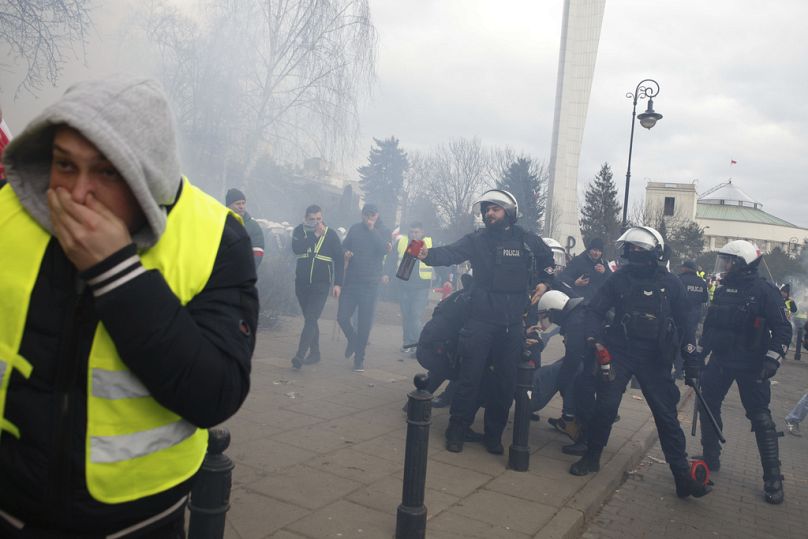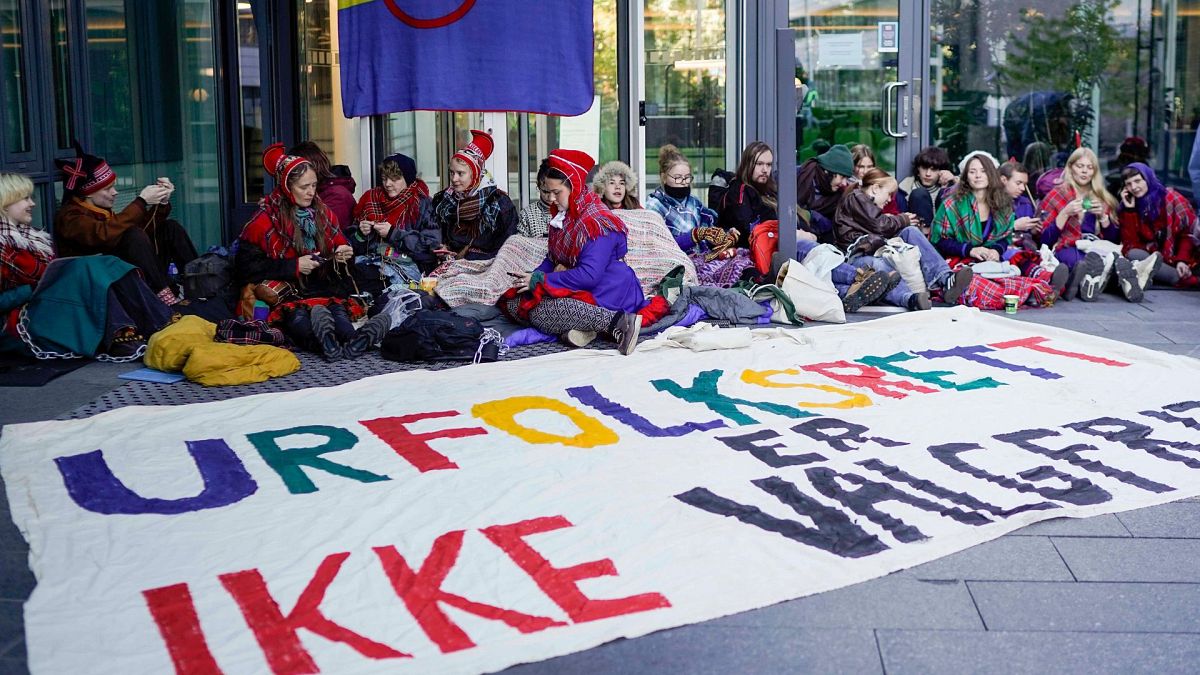
A journalist films Israel’s Iron Dome anti-missile system fires to intercept a rocket launched from the Gaza Strip towards Israel, in Ashkelon, Israel, Saturday, Aug. 6, 2022. (AP Photo/Maya Alleruzzo)
President Joe Biden is under pressure from young voters to change his policy on Gaza. He is unlikely to upend a lifetime of support for Israel. But there is one thing his administration can do today that would be morally right and perhaps politically advantageous: Push Israel to let the international media into the Gaza Strip.
Accusations that Israel is committing genocide against the Palestinians, inducing famine, and targeting reporters, are whirling across the global media landscape. Israel’s sophisticated government information machine is pushing a counternarrative. The result is a cloud of confusion pierced by occasional shafts of light from reporting inside Gaza by a handful of underresourced Palestinian journalists.
These journalists are being killed in record numbers, and the international press can only look on. Israel has blocked attempts by foreign news organizations to enter Gaza independently since it began an offensive to root out Hamas, which launched murderous, hostage-taking raids on Israel last Oct. 7.
Israel says more than 1,200 Israelis were killed, and hundreds abducted in those attacks. Some 30,000 people have been killed in Gaza in the ensuing Israeli bombardments and ground operations to kill or capture Hamas militants, according to the Gaza Health Ministry.
The only trained journalists still working inside the Strip are those who were there when the offensive began. They have been the main source of on-the-ground information and they have paid a terrible price. The Committee to Protect Journalists estimates that at least 94 have been killed. Several international news organizations have evacuated their Gazan staff, leaving an even smaller pool of reporters, who often work for small, local outfits, to be the eyes and ears of the world.
The foreign press is doing what it can to provide an accurate picture of conditions inside the Strip, relying on those local journalists and residents who post reports and pictures online whenever they can find power and a phone or internet connection.
But these reports can be difficult to corroborate quickly, as was the case with the attributions of responsibility and widely divergent death tolls published after the Oct. 17 explosion at Gaza’s al-Ahli hospital. Or again on Feb. 29, when more than 100 Palestinians died waiting for food aid amid Israeli gunfire.
The best bulwark against this type of confusion, misinformation and propaganda is firsthand reporting from the scene by experienced reporters.
Pressure from an exasperated outside world has been growing. Last month, 55 leading journalists from broadcasters such as CNN, ABC, CBS, NBC and the BBC wrote to Israel and Egypt urging them to allow news organizations into Gaza.
Explaining why he signed the letter, BBC Middle East Editor Jeremy Bowen said: “I can only surmise that Israel is not allowing reporters to work freely inside Gaza, because their soldiers are doing things they do not want us to see.”
He told BBC Radio 4’s program From Our Own Correspondent that foreign journalists might “back up Israel’s assertions that it always follows the laws of war, that it has, to use a common phrase in Israel, ‘the most moral army in the world,'” or “uncover evidence that backs up those accusations of war crimes as well as the even more serious one of genocide. Until we get in, we’ll never know,” he said.
Israel has a history of barring journalists from entering Gaza while it carries out operations, but the length of the current ban is unprecedented. The Foreign Press Association in Israel challenged the ban in January. Israel’s High Court rejected its petition citing security grounds. It said the presence of journalists would endanger Israeli soldiers and could provide operational details and troop locations.
The association noted that “concerns about reporting on troop positions do not withstand scrutiny at a time when Palestinian journalists continue to operate in Gaza, and when it is vital for the foreign press to access areas of Gaza where troops are not present.”
Israel has allowed some foreign and Israeli journalists to embed with Israel Defense Forces units, but reporters’ movements and access to residents were severely restricted during these supervised trips. Even before Oct. 7., the IDF barred Israeli journalists from entering Gaza independently out of safety concerns, but foreign nationals had been able to enter.
The IDF’s arguments about journalist safety and the disclosure of sensitive operational intelligence are flimsy. Journalists accredited by the Israel Government Press Office are bound by military censorship regulations, which have worked well for decades. It is up to news organizations to determine the level of risk they are prepared to allow their reporters to take. Major news outlets have professional security staff that carry out risk assessments and often accompany reporting teams on the ground.
Meanwhile, foreign outlets are relying on an ever-shrinking pool of Gazan journalists. Dozens of international news organizations pledged their support for these journalists in an open letter on Feb. 28 noting that they continue working “despite the loss of family, friends, and colleagues, the destruction of homes and offices, constant displacement, communications blackouts and shortages of food and fuel.”
The news leaders reminded Israel that journalists are civilians and warrant protection as non-combatants.
“Attacks on journalists are also attacks on truth. We commit to championing the safety of journalists in Gaza, which is fundamental for the protection of press freedom everywhere,” they wrote.
Politicians have also rallied behind the press. More than 20 House Democrats reached out to Secretary of State Antony Blinken last month, demanding the Biden administration take measures to protect Palestinian reporters and push Israel and Egypt to grant media access to the Gaza Strip, which borders both countries.
“We ask that you work with the Israeli and Egyptian governments to protect press freedom and ensure journalists are able to execute their ‘vitally important role,’ as you have described, in providing accurate reporting on the full scale of the war,” they wrote.
Biden’s support among young and Arab-American voters is eroding over Gaza, as last month’s Michigan primary showed. Leaving aside political considerations, there is a compelling moral case for the U.S. to honor the commitment it makes every May 3 on World Press Freedom Day to uphold the right of reporters to work freely and safely.
Washington pumps billions of dollars in aid to Israel and Egypt each year. It has leverage. For the sake of media freedom, it should use it.
Robert Mahoney is a journalist, author and expert on press freedom. He is a former executive director of the Committee to Protect Journalists and former Jerusalem bureau chief for Reuters news agency.
 AP photo
AP photo














